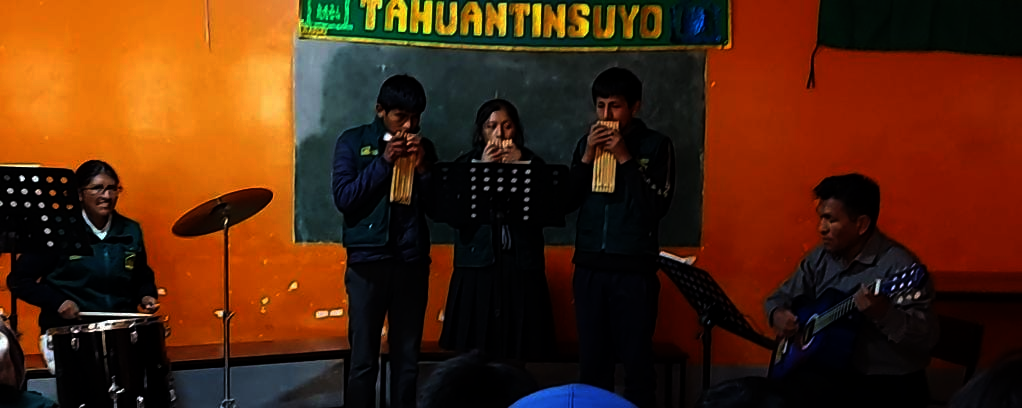By Lydia Hill | Project Leader
We are pleased to write this update on the music and dance program at the Tahuantinsuyo Community Centre in El Alto, Bolivia in response to the micro project fundraiser on GlobalGiving. Thanks to your generosity, a teacher was hired to lead this class, helping the children learn and preserve their Aymara musical and cultural dance traditions!
Children 4 to 6 years old participated in musical expression starting with recognition of musical instruments, learning about rhythm sequence, hand-ear coordination and the manipulation of musical instruments made with the use of recycled materials.
Children aged 7 to 12 strengthened their skills for reading music, rhythm in musical times, strenghtened their auditory perception skills, and imitation of rhythms and melodies using traditional Andean wind instruments.
Adolescents ages 13 to 18 strengthened their knowledge of musical notes and creativity and created their own interpretations of music using several instruments, including the zampona, an Andean wind instrument. Some created musical compositions about violence against women and caring for the environment as part of their expression of self through music. As one teenager said, they are making their own songs "since through musical lyrics you can express the feelings and situations that a person goes through in life and can serve them to reflect and change their way of thinking and therefore act".
Children ages 6 to 18 participated in the Dance workshop where they learned traditional native dances of the Aymara culture, including;
Kullawada: A dance that represents the llama herders of the Bolivian highlands, which consists of making movements as if they were herding animals in a direction with the use of a wave of wool.
Waka waka: a dance that represents the cattle of the Bolivian highlands in which the main characters are the milkmaid, the kusillo and the bulls.
Tinku cuyo: meaning in Spanish is "encounter" dance that represents the origins of the department of Potosí – Bolivia, it is characterized by demonstrating agile movements and colorful clothing.
Kallahuaya: originally from the department of Oruro, it represents the dance of the ancestral healers.
Tundiki: A dance of Afro-Bolivian origin, from the Yungas of the department of La Paz, it consists of performing fun flirting movements with the use of colored handkerchiefs.
Tarqueada: represents the Aymara culture practiced in times of potato planting so that there is good production, but which is adapted to be practiced in Andean gatherings in general.
The music and dance program will continue in 2024 as an important component in preserving the Aymara traditions of the children attending the Centre. Thank you for your support for this important program for the children.
Project reports on GlobalGiving are posted directly to globalgiving.org by Project Leaders as they are completed, generally every 3-4 months. To protect the integrity of these documents, GlobalGiving does not alter them; therefore you may find some language or formatting issues.
If you donate to this project or have donated to this project, you can receive an email when this project posts a report. You can also subscribe for reports without donating.





